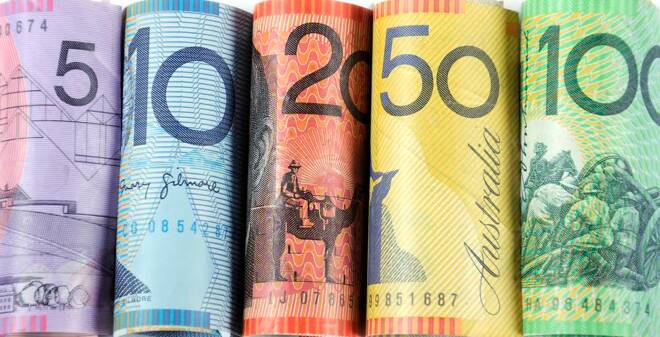Advertisement
Advertisement
AUD/USD and NZD/USD Fundamental Daily Forecast – Aussie Hits Three-Week Low on QE Expectations
By:
The Reserve Bank of Australia (RBA) discussed the possibility of further monetary easing at its October board meeting.
The Australian and New Zealand Dollars are trading sharply lower on Tuesday, putting them in a position to change their respective trends to down on the daily chart for the first time in nearly two-weeks.
Both currencies are being pressured by increasing expectations of monetary easing with the Australian central bank likely to take action at next month’s meeting and the New Zealand central bank likely to make their move early next year.
At 08:15 GMT, the AUD/USD is trading .7047, down 0.0022 or -0.32% and the NZD/USD is at .6575, down 0.0033 or -0.50%.
US Dollar Supported as Stimulus Deal Hopes Fade
Also weighing on the Aussie and the Kiwi was as stronger U.S. Dollar, which rose as fading hopes for a U.S. coronavirus aid package dealt a blow to risky assets worldwide.
While traders remain hopeful talks between U.S. House Speaker Pelosi and Treasury Secretary Mnuchin will result in a deal before the November 3 presidential election, any agreement will have to pass the Republican-controlled Senate where opposition to a bigger stimulus bill remains stubborn.
RBA Minutes Weigh on Aussie as QE Looms Large
The Reserve Bank of Australia (RBA) discussed the possibility of further monetary easing at its October board meeting, including cutting the cash rate towards zero and buying longer-dated government bonds, minutes of its most recent meeting showed on Tuesday.
RBA board members noted larger balance sheet expansions by other central banks had led to lower sovereign yields in most other rich nations, minutes of the October 6 meeting showed.
Board members also discussed implications for the exchange rate, providing the clearest sign yet the RBA will likely soon cut rates further and expand its massive bond buying campaign, to lower both borrowing costs and the local dollar.
Short-Term Forecast
The RBA has held its cash rate at a record low 0.25% since can emergency 50 basis points (bps) cut in mid-March. However, economists widely predict the RBA will trim the rate at its November 3 policy meeting by 15 bps to 0.1%. This move, coupled with the buying of bonds further out the yield curve should be enough to keep the pressure on the Aussie Dollar.
Buying long-dated bonds is one way that central bank policymakers would reduce funding costs.
For a look at all of today’s economic events, check out our economic calendar.
About the Author
James Hyerczykauthor
James Hyerczyk is a U.S. based seasoned technical analyst and educator with over 40 years of experience in market analysis and trading, specializing in chart patterns and price movement. He is the author of two books on technical analysis and has a background in both futures and stock markets.
Advertisement
